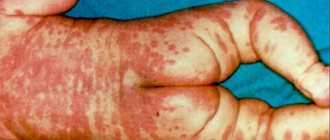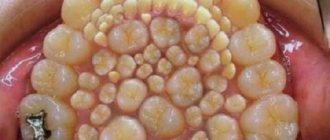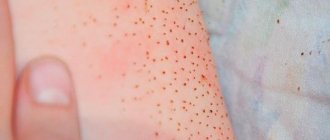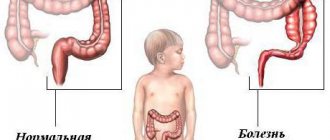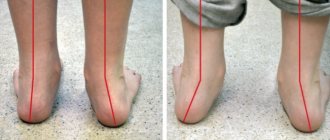According to statistics, caries occurs more often in children than in adults. This is one of the most common reasons for visiting a dentist, because not only permanent teeth, but also baby teeth are susceptible to destruction.
Children do not like to be treated, and often parents feel sorry for the child until the last moment and do not take him to the dentist in order to avoid stressful situations. But you need to understand that the health of his teeth in adulthood will depend on how they care for their baby’s oral cavity in childhood.
What are the causes of caries in children
The appearance of caries can be due to various reasons.
Insufficient or incorrect hygiene
Children most often do not want to brush their teeth - they are capricious because they do not like the process itself or the taste of the toothpaste. And parents often follow the lead and let the situation take its course, without insisting on the need for this procedure. However, it is necessary to teach a child to brush their teeth from a very early age, so that by the age of two the child himself shows a desire to take care of his teeth. Dentists recommend starting caries prevention immediately after the first teeth erupt.
Prolonged contact with the pacifier
In dentistry there is such a thing as “bottle caries”. It can develop before the age of 1 year, when the child is fed too long and often from a bottle with a nipple. Most often, such caries affects the upper front teeth, and the consequences are really serious.
Transmission of infection from parents
Many people are familiar with the situation when a child suddenly dropped a pacifier on the floor, the mother quickly picked it up, licked it and returned it to the baby. It's not as harmless as it might seem. This is how bacteria are transmitted that cause caries. For the same reason, you should not lick the baby's spoon when feeding. The infection can be transmitted even through kissing, so parents and other relatives who are in close contact with the child should carefully monitor the health of their teeth.
Congenital problems
Often, dental problems are congenital in nature. This may be genetic or caused by health problems in the mother during pregnancy. Bad habits, past illnesses, deficiency of vitamins and minerals (especially calcium) - all this affects the dental health of the unborn baby.
Abuse of sweets and carbohydrate foods
This is the most common cause of dental caries. Too much love for sweets is not good for children's teeth. Sweets, juices, lemonades, buns and cookies - all this creates a favorable environment for the development of bacteria and subsequent destruction of enamel.
Lack or excess of fluoride
Fluoride is necessary for the normal formation of teeth and to protect them from damage. We get it from food and water, and it is better to periodically get tested for the content of this element in the body in order to adjust nutrition and care in a timely manner. Both deficiency and excessive amounts of fluoride provoke dental problems.
External manifestation of various stages of bottle caries
Externally, bottle caries in children manifests itself as follows: dark yellow spots and abrasions appear on the teeth, which can be over the entire surface of the teeth. They first appear on the upper incisors near the gums. In some cases, carious spots appear on molars and fangs, so the child’s teeth should be examined daily.
Light, matte spots (called the chalky/white spot stage) appear early in the development of the disease. Over time, they take on the appearance of roughness, darken and deepen. First, caries usually affects the four upper front teeth. The carious process originates in the gingival zone, quite quickly covering the entire tooth along the perimeter above the gum and penetrating deeper into the layers of enamel.
Average caries is manifested by such characteristic signs as simultaneous damage to several teeth at once.
Attention! The development of bottle caries can occur not only on the front teeth. It can appear on one tooth or on molars. That is why it is necessary to consider not only the baby’s front teeth.
Bottle caries in the photo of a late stage of development is completely destroyed tooth enamel in places, deep lesions of dentin (darkening occurs quickly due to pigmentation of tissues with various food dyes and the result of bacterial activity).
What are the stages of dental caries in children?
Tooth decay begins gradually, and with regular examination, parents and the dentist can catch the right moment in time and begin treatment.
| Initial stage Specks appear on the enamel, which differ in color from the rest of the tooth, and over time they darken. | Superficial caries The tooth decay is still minor, but the child is already beginning to react to hot and cold. | Average caries A carious cavity appears at the site of enamel destruction; the tooth reacts very painfully to the temperature of food and drinks. | Deep caries The last stage is when not only the enamel is destroyed, but also the tooth tissue itself. If treatment measures are not taken, then inflammation of the pulp will gradually begin, and the tooth will have to be removed. |
It is better not to delay the examination, because caries in a child can develop quite quickly. The further you go, the more uncomfortable and worrying your first visit to the doctor will be.
Why does caries occur in childhood?
It is known that caries is a pathological process that occurs in the hard tissues of teeth under the influence of internal and external factors. Carious lesions arise as a result of the “work” of cariogenic bacteria living in the oral cavity.
In this article
- Why does caries occur in childhood?
- Features of caries of milk teeth
- Symptoms of carious lesions in baby teeth
- Why is caries treated for young children?
- How is caries treated in children?
- Methods for treating childhood caries without drilling
- Invasive treatment of caries
- Do they give anesthesia to children?
- Prevention of childhood caries of primary teeth
By processing carbohydrates that enter the mouth with food, these bacteria produce acid. It is this that contributes to the destruction of enamel, dentin and other tooth tissues. Several factors contribute to the proliferation and active activity of cariogenic bacteria, which ultimately leads to the development of caries in children.
- Improper dental hygiene.
Insufficient cleaning from plaque, infrequent cleaning.
- Eating high in carbohydrates.
Children who eat a lot of sweets and flour, drink sweet compotes at night, and snack on chocolates are more susceptible to developing caries. A favorable breeding ground for microbes is formed in their mouth.
- Reduced immunity.
Weakened immune defense does not allow the body to effectively resist negative influences, so children with weak immunity develop caries more often.
- Features of intrauterine development.
The formation of teeth occurs in the first trimester of pregnancy, and it can be affected by the lifestyle, health, and previous diseases of the expectant mother.
These factors contribute to the fact that tooth enamel begins to lose mineral substances, cariogenic microbes multiply in the mouth, and as a result, dental caries develops.
Is it necessary to treat caries of baby teeth?
Despite the “temporary nature” of children’s teeth, treatment and care for them must be thorough and complete. Chronic inflammation in the oral cavity leads to serious problems.
- A baby tooth affected by caries can decay so deeply that it affects the germ of a permanent tooth. The infection will spread to it, and it will grow up with enamel defects or simply die.
- When a baby tooth is removed, the adjacent tooth moves into its place, causing the permanent tooth to erupt in a different place than intended. As a result, the bite is formed incorrectly, and in the future it has to be corrected with braces.
- Advanced caries reduces immunity and causes ENT diseases and even allergies.
- Painful sensations prevent the baby from biting and chewing food correctly, which causes digestive problems.
- The child will be embarrassed about his bad teeth, which will prevent him from communicating with his peers.
It is necessary to treat caries at any age at the initial stage, and it is better to accustom your child to this in advance.
Silvering of teeth.
PHOTO: Silvering of baby teeth in children. The teeth turned black, but caries did not stop its development. Teeth after repeated silvering. The teeth turned black, but the carious process did not stop, since bacterial plaque continues to accumulate in the carious cavities.
One of the oldest methods of prevention and treatment of the initial stage of caries (in the stain stage) is silvering of teeth. Yes Yes. It consists of sealing, or more precisely, infiltrating, porous enamel with silver salts. The silver nitrate included in the solution, settling on the surface of the enamel, firmly seals the porous areas of the enamel, impregnating them deeply, preventing further penetration of new bacteria and their metabolic products into the enamel. Bacteria located in the pores die, since silver nitrate has a bactericidal effect. Over time, the silver nitrate film requires renewal, so this procedure must be repeated at least every month. Otherwise, the carious process will begin to progress under the silver. A significant disadvantage of silvering is the need to constantly repeat the procedure. After silvering, teeth become black, which makes it impossible to timely diagnose the progression of caries. At the BabySmile Clinic, we abandoned teeth silvering due to the low effectiveness of this technique.
EVEN IF THE SILVER PLATING METHOD IS CORRECTLY PERFORMED AND ALL THE DOCTOR'S RECOMMENDATIONS ARE FOLLOWED, THERE IS NO CHANCE THAT CARIES WILL NOT CONTINUE TO PROGRESS UNDER THE SILVER FILM! SINCE TEETH BLACKEN AFTER SILVERING, THE DEVELOPMENT OF CARIES MAY REMAIN UNNOTEED FOR A LONG TIME.
The advantage of the method is its extreme simplicity, allowing it to be carried out even by the smallest children! The technique of silvering teeth is obsolete, due to the impossibility of guaranteeing any result.
Can a filling be placed on a baby tooth?
If the doctor diagnoses not the first stage of tooth decay and insists that it is necessary to put a filling, it is better to agree with him. This is the fastest and most reliable way to solve the problem of infection and protect permanent teeth.
Modern filling materials are as safe as possible for children’s teeth. Depending on the stage of caries, the doctor will select a suitable filling option. Before installing a permanent filling, the dentist may place a temporary filling for several days to fix the medication inside the diseased tooth.
If the damage is not yet serious, the doctor will limit himself to preventive measures. There are different approaches and tools for different problems.
What are the treatment methods for caries in children?
Treatment methods depend on the stage of caries development. The more serious the problem, the longer it will take to fix it.
Preventive
At the initial stage, a delicate intervention is sufficient, which can stop or reverse the process of destruction that has begun. In this case, for example, remineralization (treatment of teeth with a solution of calcium and fluoride) or deep fluoridation (treatment with fluoride) is used. Such procedures are carried out in courses until the condition of the teeth is stabilized.
There is also a treatment method without drilling, which allows you to quickly and completely painlessly prevent the development of inflammation. The procedure is suitable for children from 4–5 years of age and causes them minimal discomfort.
Medicinal
For medium and deep caries, classical filling with preliminary preparation of teeth for the procedure is already necessary. To ensure that the treatment is calm and painless, the most modern and effective anesthesia is used. Your baby doesn’t even have to endure the pain of the needle because the injection site is first numbed. The drill is used to a minimum in the treatment of childhood caries - if something can be done manually, then the doctor will do so.
If a child has a complex case of caries, or is very restless in the dentist's chair, treatment is carried out under anesthesia. After consulting with an anesthesiologist and passing all the necessary tests, the baby will be selected the appropriate drug and dose, he will be put into deep sleep, during which the doctor will carefully monitor the condition of the body. Time will fly by in a dream - the child will wake up with healthy teeth, a clear head and an unspoiled mood.
Treatment with preparation and filling
Usually, if a tooth does not become loose, the doctor seeks to save it. The dentist determines the methods of treating baby teeth and the need for filling them individually. Any dental procedures accompanied by pain are performed for children using painkillers. There are: application, needle-free, infiltration and conduction anesthesia.
Children often experience severe fear of treatment; in such cases, the doctor may perform sedation using nitrous oxide. This method is aimed at emotional and physical relaxation: using a special mask, the child inhales a mixture of oxygen and nitrous oxide. After completion of treatment, the mask is removed and after 10 minutes the gas mixture is completely eliminated from the body.
In cases of advanced caries in young children, treatment is carried out under general anesthesia.
Colored fillings have been developed specifically for the treatment of children's teeth. Treatment turns into an exciting game, the baby can choose the color of the filling: red, green, yellow, blue, etc. Colored fillings include photopolymers and glass ionomers, which provide strength. In addition, these fillings accumulate fluoride, which provides additional protection against the development of secondary caries.
How to prevent tooth decay in children
The best way to combat tooth decay is prevention. To maintain the health of children's teeth, you need to follow several rules.
- Follow your diet. Reduce your consumption of sweets as much as possible. Make sure your child gets enough calcium from their diet - dairy products, nuts, legumes and sesame are especially rich in it.
- Teach your child to brush their teeth. From the first tooth that emerges (age 6–8 months), you can already use a small baby brush. Gradually accustom your child to self-care - buy tasty toothpaste, turn the process of brushing your teeth into a game, encourage your baby’s interest.
- Visit your dentist regularly. Children need to undergo preventive examinations, as well as professional hygiene procedures more often than adults - approximately once every three months. The doctor will be able to identify problems in a timely manner and give advice on the proper care of children’s teeth. In addition, visits to the doctor will become routine for the baby, and he will not be afraid of them.
Try to carefully monitor the condition of your child’s teeth and pay attention to his complaints. The sooner you see a dentist, the faster, more effective, and most importantly, painless the treatment will be. Explain to your child that dentistry is not scary. And our experienced doctors will help him make sure of this.



